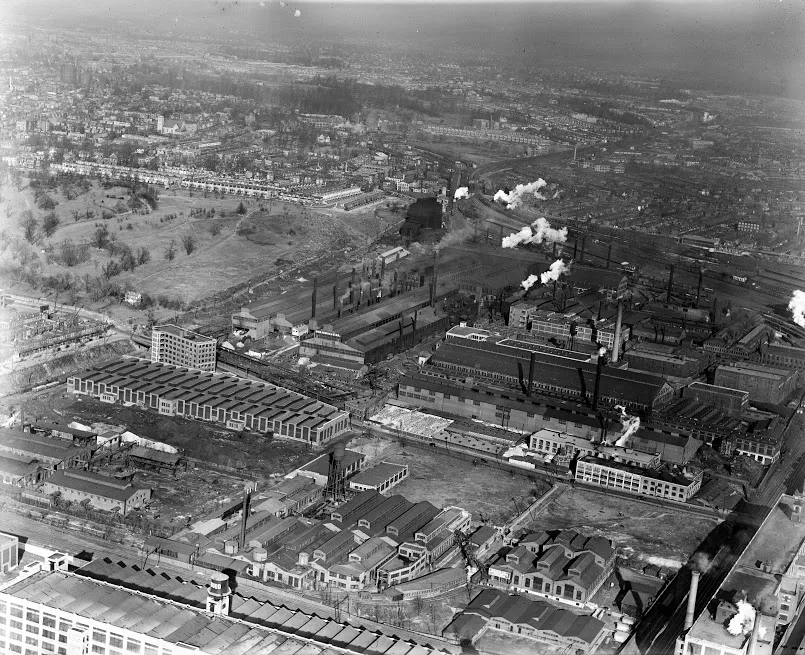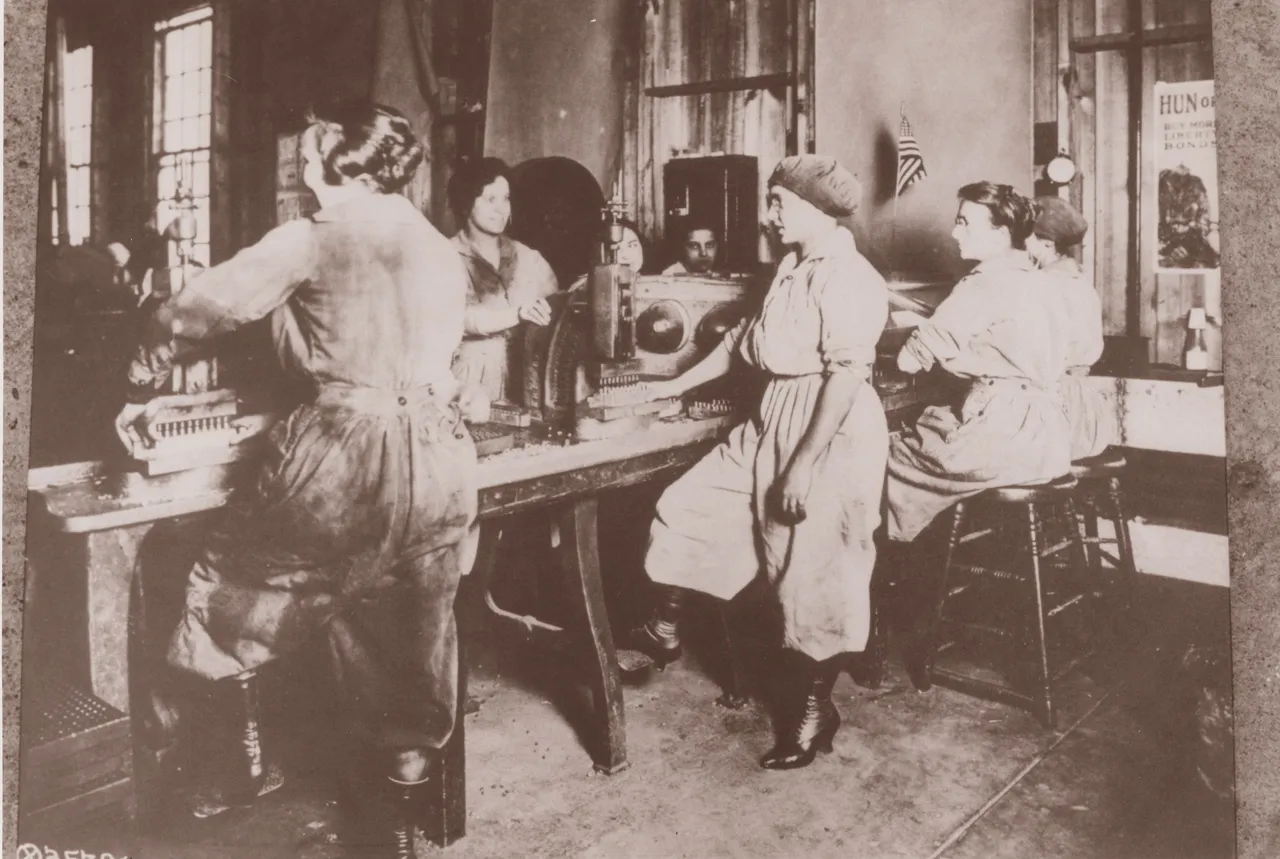WWI was raging for most of 1918, and as Philadelphia was a big industrial city, it played a large role in producing supplies for the war effort. One of the players in the steel industry, Midvale Steel and Ordnance Company, had been producing steel primarily for the military even before the war (naval armor plates in particular), however the increased demand led them to build two new factories in Philly. One was a new howitzer plant built next to their original plant in Nicetown, and the other was a rifle factory in Eddystone (in Delaware County).

Midvale Steel plant seen from the sky in 1928. Photo credit: Hagley Museum and Library
With so many men leaving their jobs for the war, Midvale Steel hired and trained women to work in the factories as well. Similar stories could be found all over the US as many other industries shifted to wartime production, and in fact very similar stories can also be found on the homefront during WWII. It makes me wonder through—what would happen if we entered another world war today?

Women working at Midvale Steel. Photo credit: Pennsylvania State Archives
Its May 29, 2022. Japanese, South Korean, and US forces are fighting North Korea after Kim Jong Un was assassinated in a power play by an even more radical faction who launched a nuclear warhead at Tokyo two months before. Although it was shot down by Patriot missile systems based in Japan, it opened the door to Iran to attempt a nuclear strike on its old enemies, Iraq and Israel, thereby drawing US and NATO forces into a war in Iran and weakening their position in Europe. Putin saw in this the perfect opportunity to continue pursuing his ambitions in Eastern Europe, and assumes President Chelsea Clinton may impose sanctions but will not risk starting another war. Today, however, Russian forces moved into Poland, and the members of NATO finally declared war.

Russian “Army-2015” Show. Photo credit: Sergei Karpukhin/Reuters
Faced with multiple conflicts and far outnumbered, the US institutes a draft to fill out its ranks with more combat troops. Young men and women are conscripted, trained, and sent to the front. However, there are massive shortages of weapons and equipment. Unlike the previous wars, there is no reserve of unemployed women able to step into jobs left by men, and in fact the jobs they’ve left because of being drafted means there are even more jobs to fill. Since the US economy is less industrial than before the previous wars, it could be much harder to produce the needed materiel. While this might be helped a bit by increased automation, that also means it takes much longer to train new factory workers.


Russian artillery strike at Army-2015. Photo credit: Maxim Shemetov/Reuters
Who would fill those roles? Would white-collar professionals, academics, artists, and the like seek out associate’s degrees for blue-collar jobs that suddenly pay huge salaries? Or maybe get STEM degrees to work on developing weapons? Maybe computer science training to fill the demand for cyber warriors? Would we simply automate more jobs to fill the void? As it stands I would probably be deployed in the first wave and killed by Russian counter-battery fire since they have much more and newer artillery than the US, but for those of you who would still be around, how do you think the US would deal with these problems? Or would it lose WWIII?
Sources:
“Midvale Plant to Make Great Guns,” Salt Lake Telegram Herald Republican, June 13, 1918; “Nicetown Is U. S. Site for New Big Gun Plant,” The Philadelphia Inquirer, May 26, 1918; “Pershing Sends Thanks for a Million Rifles Employees of Midvale Steel Plant Get Appreciative,” The Philadelphia Inquirer, October 17, 1918.100% of the SBD rewards from this #explore1918 post will support the Philadelphia History Initiative @phillyhistory. This crypto-experiment conducted by graduate courses at Temple University's Center for Public History and MLA Program, is exploring history and empowering education. Click here to learn more.